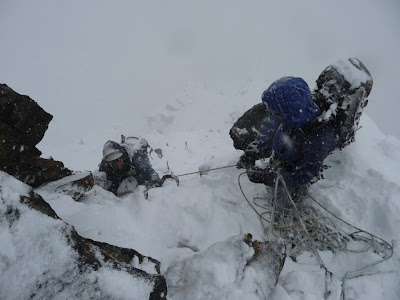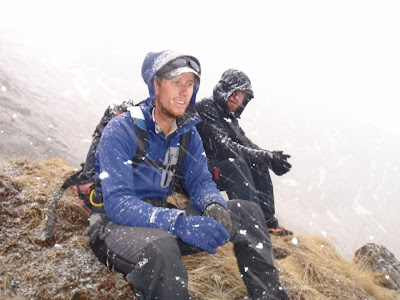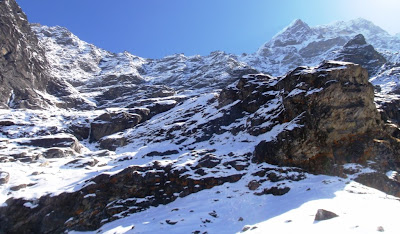Our good friend Bishnu with a cake baked to celebrate our return to base camp.
I am now settled back into the guest house in Kathmandu reflecting back on the events of the past month since arriving in Nepal in late April. This has been my first climbing expedition to the Himalaya and the greater ranges of the world and has been an experience that I will never forget – highlighted by many a cherished memory. Nepal is truly a beautiful country; right through from its superb natural scenery and majestic towering peaks to the ever friendly and smiling local people.
While we were ultimately unsuccessful in our attempts to establish our proposed new routes on Kyajo Ri and Kusum Kanguru the trip has not been without reward. And I am more than content to walk away with our potential new climb to the Northwest ridge of Kusum Kanguru as a worthy prize for our efforts. Together with Mike and Steve I feel that we bonded effectively and worked well together as a team and were all able to learn a range of valuable lessons from our experiences. And I would first and foremost like to extend my thanks to them for accompanying me and helping ease the burden of the expedition leadership on what has been an amazing adventure.
Next I cannot go without giving thanks to all those that have supported and provided invaluable assistance towards the expedition - without whom this trip would never have been possible. I would like to acknowledge the contributions of both my personal and the expedition sponsors; iclimb, Sport and Recreation New Zealand, The New Zealand Alpine Club, The Mount Everest Foundation, Icebreaker, and Leppin Sport. And also to the great support we received from Parikrama Treks & Expeditions while in Nepal.
Final morning glimpses from my tent before we prepare to descend from base camp.
Finally to all our other friends, family and supporters thank you for your well wishes throughout. All the best until next time and thank you for following our progress on the New Zealand Solu Khumbu Alpine Expedition 2011!!








































